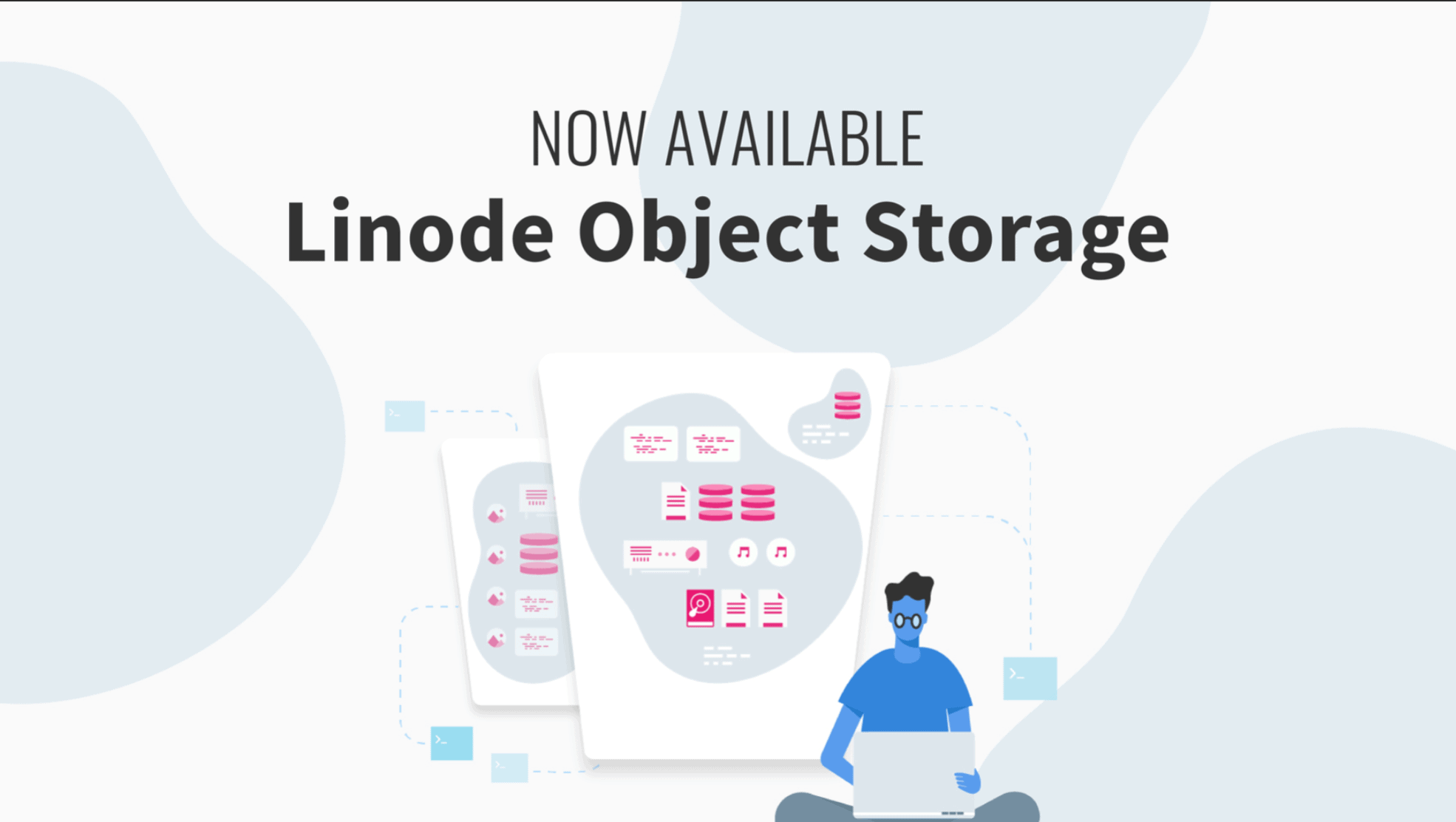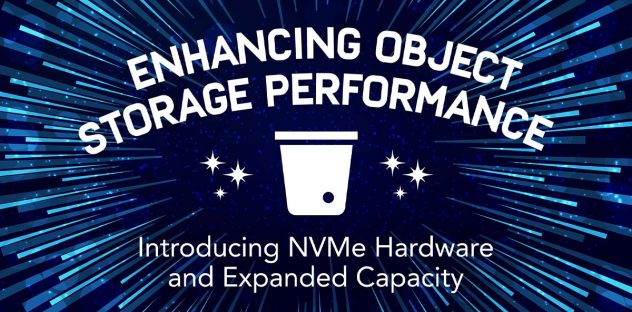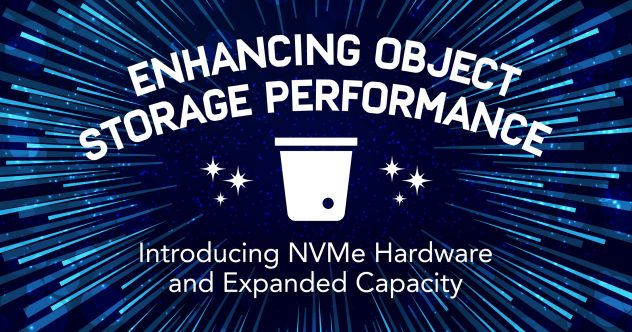Der mit Spannung erwartete Start von Linode-Objektspeicher ist endlich da! Wir haben Linode-Objektspeicher entwickelt, um Entwicklern die Verwaltung unstrukturierter Daten, wie z. B. Content-Assets, zu erleichtern und erschwinglicher zu machen, aber auch um anspruchsvolle und datenintensive Speicherherausforderungen rund um künstliche Intelligenz und maschinelles Lernen zu bewältigen.
Weitere Möglichkeiten, wie Entwickler Objektspeicher nutzen können, finden Sie in unserer Dokumentation:
- Anwendungsfälle für Linode-Objektspeicher
- So verwenden Sie den Linode-Objektspeicher
- Hosten Sie eine statische Website mit Linode-Objektspeicher
Der Linode-Objektspeicher ist S3-kompatibel, hochverfügbar und leicht skalierbar für all Ihre Anforderungen in Sachen Backup, Big Data und Datenarchivierung. Mit Objektspeicher müssen Sie keine virtuelle Maschine von Linode besitzen oder verwenden, um von der Speicherung Ihrer Dateien oder der Erweiterung Ihrer Kapazität zu profitieren. Linode-Objektspeicher ist ab sofort in unserem Rechenzentrum in Newark verfügbar und wird ab den kommenden Monaten in den übrigen Regionen eingeführt.
Linode-Objektspeicher beginnt bei 5 $ / Mo. und beinhaltet 250 GB und 1 TB ausgehende Übertragung, Speicher und Übertragung darüber hinaus betragen 0.02 $ / GB. Buckets skalieren bis zu 10 TB pro Kunde und Cluster.
Starten Sie jetzt!
Für bestehende Kunden können Sie die Bereitstellung und Verwaltung Ihrer unstrukturierten Daten und statischen Website direkt von Ihrem Linode Cloud Manager aus beginnen. Es ist wirklich so einfach wie ein Klick auf eine Schaltfläche.
Leslie aus unserem Dokumentationsteam hat ein Video-Tutorial erstellt, das zeigt, wie einfach es ist:
Diejenigen unter Ihnen, die noch keine Kunden sind, können sich hier anmelden und erhalten ein Guthaben von $20 für die ersten Monate des Linode-Service, wenn Sie den Code OBJECT20 verwenden.
Um mehr über die Speicheroptionen von Linode zu erfahren, besuchen Sie unsere Produktseite.







Kommentare (14)
Good news thanks for the wonderful staff. Greetings
Greetings, Mohammed – Thanks for the kind words!
Bad pricing? Spaces only costs half this for bandwidth including CDN.
Thanks for the feedback, and I’ve shared it with the team.
I hate to saying it but this is disappointing pricing for the storage y’all.
I was really hoping for good pricing and unmetered/uncharged ingress/egress from the object storage if used entirely within the Linode network.
Backblaze B2, for example, is $.005 (half a penny) per GB per month.
The included 1TB of bandwidth is nice, but the storage pricing really needs to be tweaked to be competitive. This just makes it “more of the same” when compared with other providers.
Strive to be better than S3 pricing! You can do it!
We appreciate you taking the time to share this feedback with us, and I’ve passed it along to our team to review. The outbound traffic will work against your transfer pool first, before being charged the $0.02/GB, and 250GB of storage is included in the $5/month.
Bandwidth pricing isn’t everything. You have to compare latency, reliability, etc. Linodes have always been very low latency compared to Amazon so Linode’s offering may be better for things like static site hosting, small files, etc. and other services may work out cheaper for large binary downloads where latency isn’t an issue. It depends on your use case.
Hi,
Good news. When it will be available on Singapore Region and is there any plan to build a new data center in Indonesia 🙂
We don’t currently have anything to share, but we’ve taken note of your interest! Make sure to keep an eye on the blog for our latest updates.
Let’s say I have a use that requires distributing large files to users, who expect to download them with reasonable bandwidth, but latency does not matter at all. What would you recommend to use instead?
John If you’d prefer to use something other than Object Storage, then you could set up a Linode with FTP (or your alternative of choice) and use an attached Block Storage Volume to store the data. There’s more info on Block Storage here:
https://www.linode.com/docs/guides/how-to-use-block-storage-with-your-linode/
For AWS, from some documentation: “An Amazon S3 bucket has no directory hierarchy such as you would find in a typical computer file system. You can, however, create a logical hierarchy by using object key names that imply a folder structure. For example, instead of naming an object sample.jpg, you can name it photos/2006/February/sample.jpg.”
Is this the same with Linode’s object storage? The video indicates that you can upload folders, and they will actually show up in the web interface as being a folder. When doing this, is the folder virtual in nature, or does it actually exist in the bucket?
Hey Kirby – the short answer here is yes! You can do this with Linode Object Storage as well. Technically, the file structure is still flat, but you can still emulate folders/folder hierarchy when uploading objects.
As in the video, if you’re using the Cloud Manager, this can be achieved by uploading a folder with object in it already or by dragging objects directly into an already-established folder.
For more tips/tricks/tools, check out our How to Use Linode Object Storage guide.
When you’ll add CDN to your spaces, like DigitalOcean does? For even better latency for people/users from the same local area/state